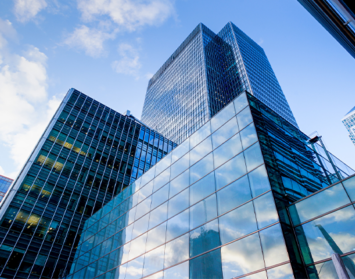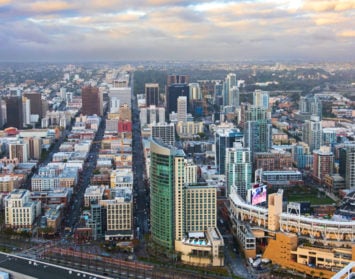
One’s stand on an improving commercial real estate market all depends on where one sits. For tenants, an improving commercial market results in higher rents, fewer concessions and less flexibility. For a landlord, it results in higher income, less costs and more stability. But whether you are a winner or loser in an improved commercial real estate market, the fact is that 2012 will be a transitional year on the way to a more healthy commercial real estate market for property owners.
The commercial real estate market ended in 2011 with strong signs of a recovery in the making. In the fourth quarter, 865,000 square feet of office, lab and industrial space came off the market, making 2011’s net absorption 1.957 million square feet of total space. On the heels of the 2.134 million square feet that came off in fourth quarter 2010, a combined 8 percent of the total inventory of available space came off the market in the last five quarters combined.
Most Improved Markets
While every San Diego office submarket, except for Downtown, saw a drop in availability over the last two years, the most improved office submarkets were Sorrento Mesa, the I-15 corridor, Del Mar Heights and Mission Valley. UTC, Carlsbad and Downtown ended the year with the highest office space availabilities in the county and continue to be where the best value can be found. Downtown and Carlsbad both struggle with anemic leasing volume — averaging vacant space on the market of nearly 2.5 years apiece. There has been a mild recovery in Torrey Pines wet lab space, as the biotech sector shows signs of recovery, and bio-fuel companies have added to demand for wet lab space. As UTC Class A office shows signs of firming up in the near future, 2014 will be a tough year as LPL Financial relocates out of six buildings on the Towne Centre Drive corridor and into a new 417,000-square-foot high-rise build to suit building with Hines at La Jolla Commons in UTC. Del Mar Heights should see some recovery slowing in the next year as Bank of Internet moves out of 40,000 square feet in that market, and other Del Mar Heights tenants consider value-oriented submarkets, and make moves accordingly. Downtown’s new challenge is lack of quality “cool” space for a surge in tech-company interest in locating there; alternatively, San Diego companies are beginning to fully understand the value of being in Downtown’s “California Enterprise Zone” — which in many cases offsets all of a company’s parking expenses.
Landlords Will ‘Test the Ceiling’
2012 will be another year of net absorption across all product types, with likely another 2,000,000 square feet coming off the market. As such, we expect to see landlords “testing the ceiling” of how far they can push rents. We are already seeing landlords coming out with proposals offering less free rent, higher annual rent increases, and higher face rates. The transactions we did in 2010 where we negotiated at least a month free per year of lease term (many leases we closed with two months free per year of term), moving allowances, low annual rent increases, and termination rights will go down in history as the bottom of the commercial market in this last commercial real estate correction. 2011 was a year of modest firming, where face rates remained unchanged, but landlords began to eat away at free rent concessions and moving allowances. 2012 will go down as a transitional year, where the pendulum starts to move towards the landlords’ favor, and tenants that lock in long term leases now are going to look wise for many years to come.
Cause and Effect
On the surface, a more expensive commercial real estate market would seem to be bad news for tenants. However, we have to consider cause and effect. Rents rise when demand exceeds supply. Increased demand for space is being driven by increased revenues and profits of local businesses and related hiring in the San Diego region. Job growth is good for the economy, as people come off unemployment rolls and are converted to taxpayers again, and have the ability to consume goods and services and drive further economic growth. Increased demand for space is also driven by our rebounding capital markets that help create new companies, and allow existing ones to grow. Rent growth is a natural economic byproduct of an improving economy. As an asset class, commercial real estate is estimated to be worth $23 trillion according to Prudential Real Estate Investors, and a recovery in that asset class helps support our banking systems and general economic stability — a healthy and balanced commercial real estate sector is ultimately good news for all, and not just landlords.
David Marino is senior executive vice president of Hughes Marino, a global corporate real estate advisory firm that specializes in representing tenants and buyers. Contact David at 1-844-662-6635 or david@hughesmarino.com to learn more.










